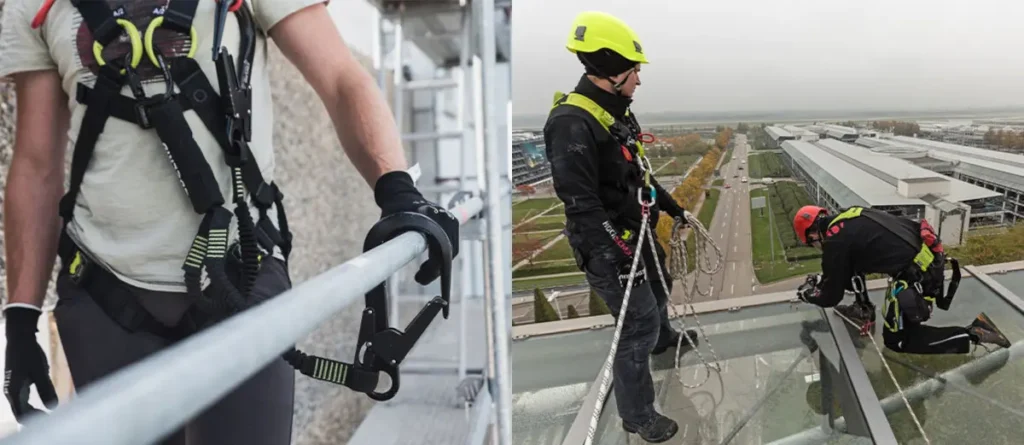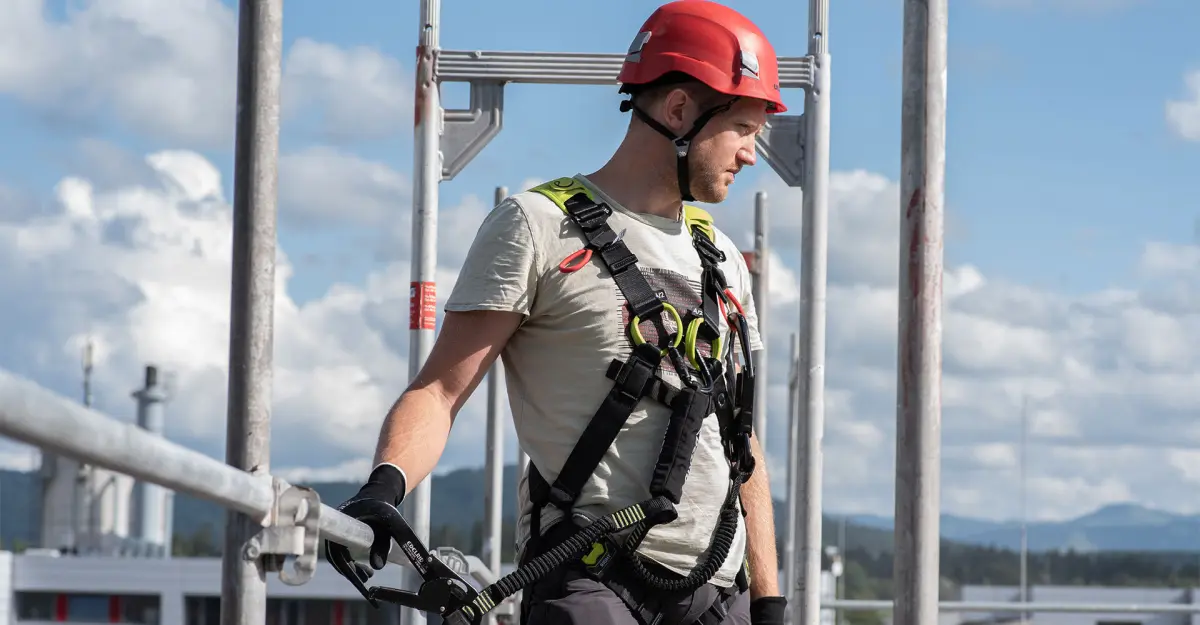
The world of construction reaches new heights with scaffolding, but these elevated worksites demand unwavering safety protocols. To ensure worker wellbeing when navigating this vertical landscape, robust fall protection equipment (PFPE) becomes an essential companion. This guide delves into the key components of a scaffolder’s safety arsenal, exploring the various elements that work in unison to keep workers safe and sound.
The world of scaffolding construction presents a unique working environment, demanding a specific set of safety measures. When navigating this vertical work zone, personal fall protection equipment (PFPE) becomes paramount.
Fall Arrest Fundamentals
Personal fall arrest systems are the cornerstone of safety on scaffolding. These systems typically comprise several key components:
- Harnesses: These full-body harnesses (EN 361) distribute fall impact forces comfortably across the wearer’s thighs, chest, and shoulders. Look for features like breathable materials and adjustable straps to ensure a secure and comfortable fit throughout the workday.
- Lanyards: Connecting the harness to a secure anchorage point, lanyards (EN 354) come in various lengths and configurations to offer freedom of movement while arresting falls. Double lanyards provide an extra layer of redundancy in case one lanyard fails. Self-retracting lanyards automatically take up slack, reducing the risk of tripping and offering greater mobility.
- Lifelines: These anchor lines (EN 353-1) provide a connection point for lanyards, often used in conjunction with fall arresters for guided descent. They are particularly useful for horizontal movement along a structure.
- Connectors: These secure links (EN 362) seamlessly join harnesses, lanyards, and lifelines, ensuring a strong and reliable connection. Inspect connectors regularly for signs of wear and tear, and replace them when necessary.
- Anchorages: Scaffolding itself often serves as the anchorage point, with specific connection points designated by the manufacturer. Double-check the weight capacity of the chosen anchorage point to ensure it can safely support a fall.
-
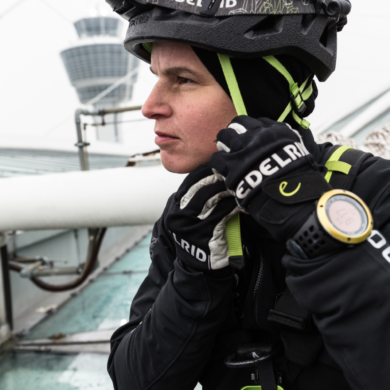 Edelrid SALATHE | Softshell helmet€ 77,00 Ex VAT
Edelrid SALATHE | Softshell helmet€ 77,00 Ex VAT -
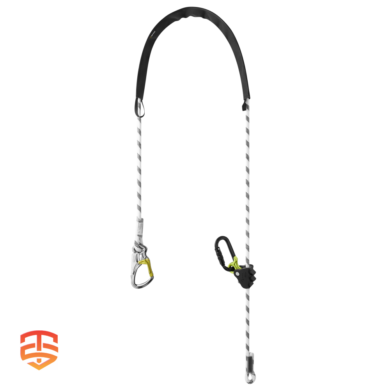 Edelrid OMBILIX ADJUST | Adjustable Lanyard€ 85,00 – € 88,00 Ex VAT
Edelrid OMBILIX ADJUST | Adjustable Lanyard€ 85,00 – € 88,00 Ex VAT -
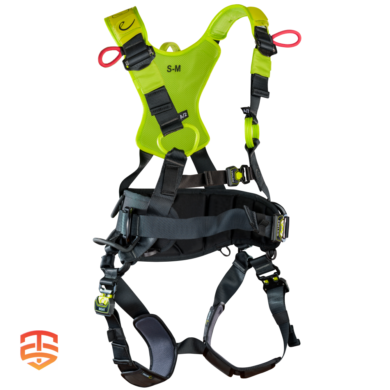 Edelrid FLEX PRO | Full Body Harness€ 255,00 Ex VAT
Edelrid FLEX PRO | Full Body Harness€ 255,00 Ex VAT
Beyond the Fall Arrest System
Head protection is crucial, so a sturdy hard hat that meets EN 397 standards is essential. It should fit comfortably and securely to prevent slipping during movement. Safety glasses with side shields (EN 166) shield your eyes from debris, dust, and flying objects. Work gloves made from durable yet breathable materials protect hands from cuts, scrapes, and blisters common in construction work. Proper safety footwear with good tread and slip resistance (EN 347) is vital to prevent slips and falls on uneven surfaces.
Preparedness is Key
Working at heights demands a plan for emergencies. A first-aid kit stocked with essential supplies should be readily available to address minor injuries. Additionally, having a lifting rescue device on hand simplifies the safe retrieval of a fallen worker. Look for devices that are easy to use and require minimal training for bystanders.
-
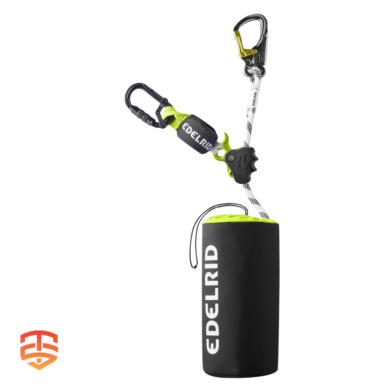 Edelrid OMBILIX 140 | Guided fall arrester€ 123,00 – € 157,00 Ex VAT
Edelrid OMBILIX 140 | Guided fall arrester€ 123,00 – € 157,00 Ex VAT -
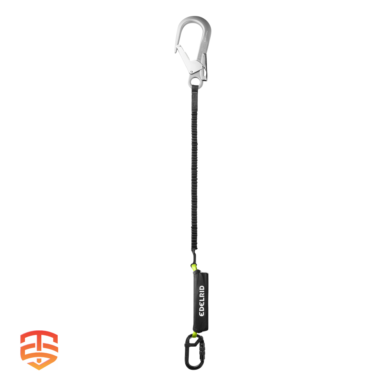 Edelrid Shockstop-I 140 Giant€ 108,00 Ex VAT
Edelrid Shockstop-I 140 Giant€ 108,00 Ex VAT -
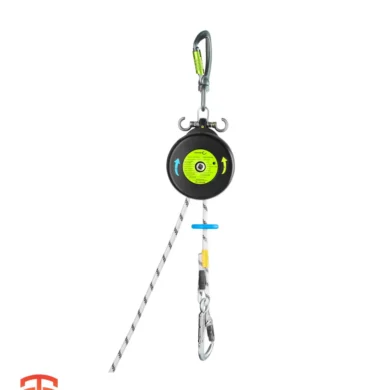 Edelrid Safe Descent Pro | Descent & Rescue device€ 1.230,00 – € 1.777,00 Ex VAT
Edelrid Safe Descent Pro | Descent & Rescue device€ 1.230,00 – € 1.777,00 Ex VAT
Remember:
- Regular training on the proper use and maintenance of PFPE is vital. This ensures workers understand how to inspect equipment for damage, wear it correctly, and perform rescue procedures.
- Scaffolding construction often requires specialized PFPE designed for the specific structure and working conditions. Consult with safety professionals or equipment manufacturers to ensure you have the right gear for the job.
- Always follow the manufacturer’s instructions for safe use of all equipment. Routine inspections and proper storage are essential to maintaining the integrity and effectiveness of your PFPE.
By incorporating these safety measures and prioritizing ongoing training, professional scaffolders can navigate this vertical world with confidence, ensuring a safe and productive work environment for themselves and their colleagues.
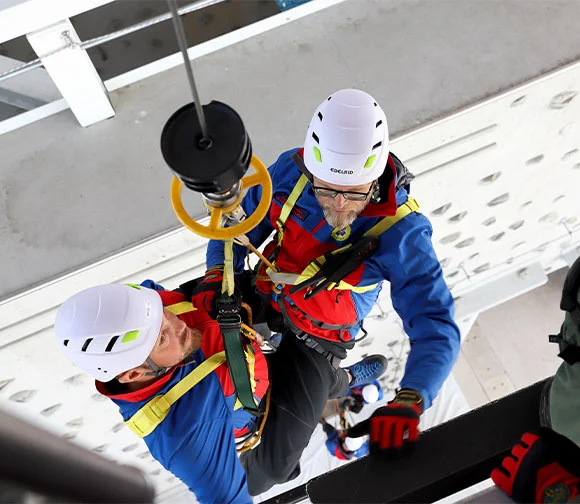
Professional Equipment
Thrill Syndicate goes beyond the recreational climb. We equip professional climbers in industrial settings, arboriculture, and even high-stakes rescue missions.
Our focus on safety is unwavering, providing top-tier PPE specifically designed for each field. We don’t shy away from customization, working with clients to develop unique solutions for their climbing challenges. Thrill Syndicate prioritizes innovation, constantly pushing boundaries in climbing technology. This isn’t just about creating new products; it’s about prioritizing safety through features like short-circuit-proof energy absorbers.
We also believe in sustainable improvement, taking proven products like our Bulletproof carabiners and making them even better through thoughtful design. From ropes and harnesses to helmets and hardware, Thrill Syndicate is your one-stop shop for professional climbing gear, all designed and built to keep you safe and efficient at height.

